McLaren Artura review: Stephen Corby road tests the hyped hybrid supercar
The Artura combines the tech of today and tomorrow into a potent package of violent speed. It feels like it will be too insane to drive on public roads | WATCH THE VIDEO
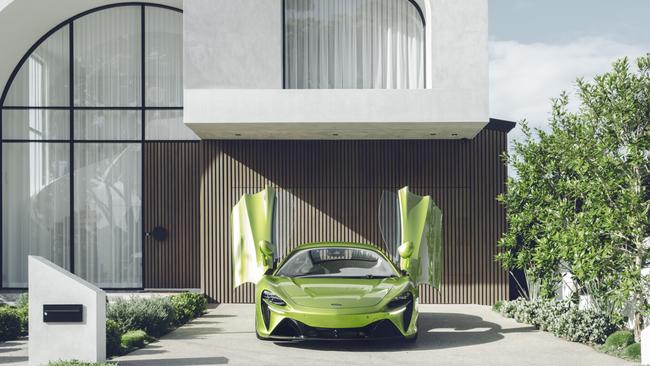
Clearly, the potential for stupidity and risky behaviour was already high. Someone had handed me the key to a McLaren super hybrid, pointed out how empty the race track was and told me I should do enough laps to make me bilious – but what I pondered afterwards was just how silly I would have been if there wasn’t another man sitting next to me.
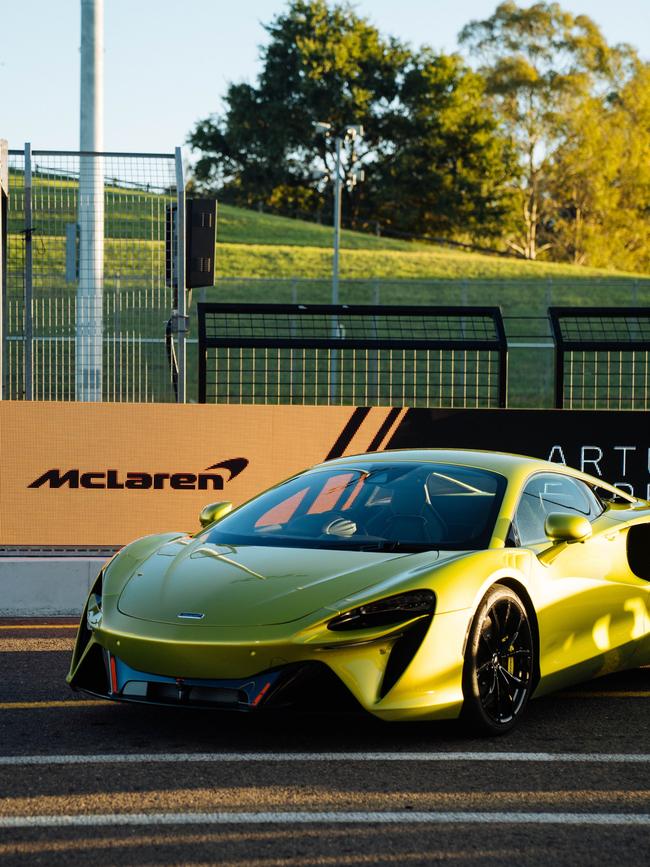
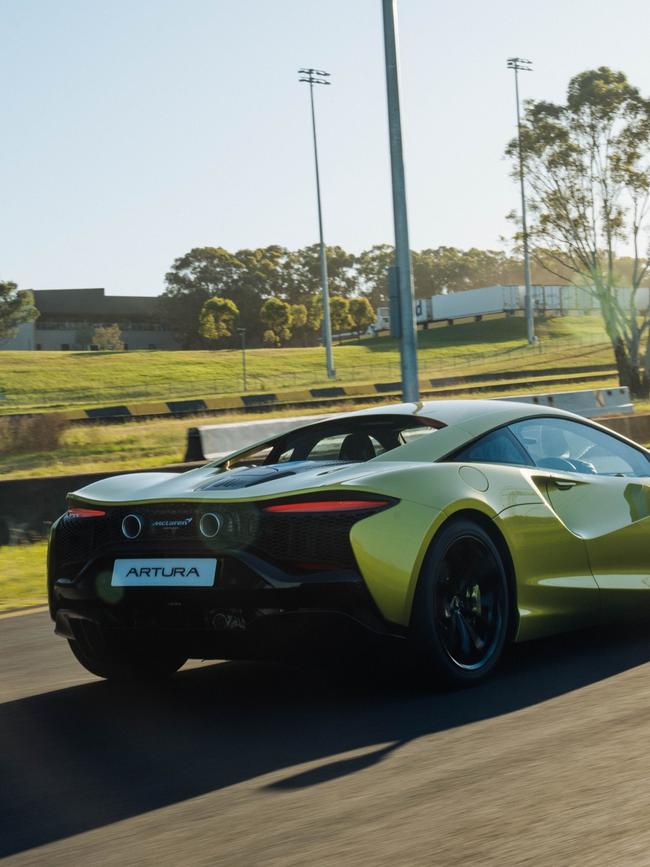
Usually they put tame racing drivers in the passenger seat at these events to keep normal people under control. But the helmeted coach sharing the McLaren Artura clearly wanted me to fully appreciate the wicked wonders of this 500kW machine. He pointed out, after a couple of initial laps in which I played with the various settings and did something no owner will ever do – drove the Artura in whispering dearth of noise electric mode at 130km/h – that I was losing pace on the entry to the long, long straight at Sydney Motorsport Park by letting the screaming twin-turbo V6 hit its redline before changing up. Partly this was caused by my inherent numpty-ism, but the fact is, this ridiculously quick plug-in hybrid, which combines the exploding petrol joy of its combustion engine with an E-Motor for what McLaren likes to call “torque infill” (which sounds like something unpleasant a dentist might do to you), revs upwards insanely quickly. Rather than looking at the tacho, my eyes were busily trying to work out why everything looked blurry.
After hitting 240km/h, and then 250km/h a couple of times, I took his advice and carefully managed the upshifts, smashing past 200km/h just a third of the way down the straight and then hanging on – knuckles ashen, cheeks chalky – clearly desperate to impress this bloke I’d never met in my life, and trying not to stare fixedly at the speedo’s flickering numbers.
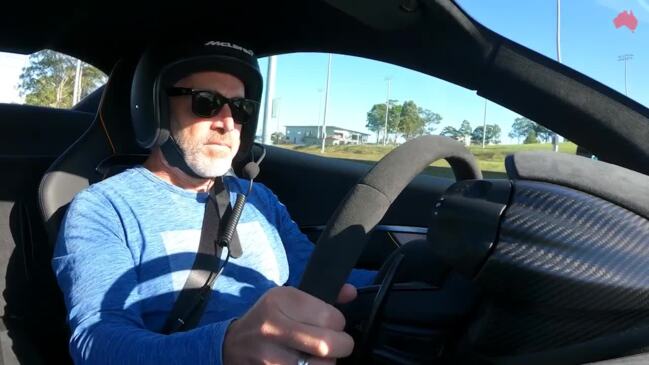
When I finally got past 260km/h, which felt manly enough, I found myself having to pound the McLaren’s assuredly powerful carbon ceramic brakes a lot harder, and then felt one of those horrible, sphincter-squirrelling moments as the car seemed to become slightly fluid beneath me (if you’ve never frightened yourself on a track, it’s a bit like that instant where you don’t know whether you’ve just farted or something far darker has happened).
It was the kind of movement that wouldn’t have been alarming at all if it weren’t for the fact that I was doing 160km/h on the entry to a bend. I think I stopped not only breathing but existing for a moment as the insurance waiver I’d signed earlier flashed before my eyes (at $449,500, an Artura is not a vehicle you’d want to break into small pieces). Would I have dared push it that far if I was alone in the car? To put it another way, will I ever grow up and stop letting the teenage idiot within me out of his box?
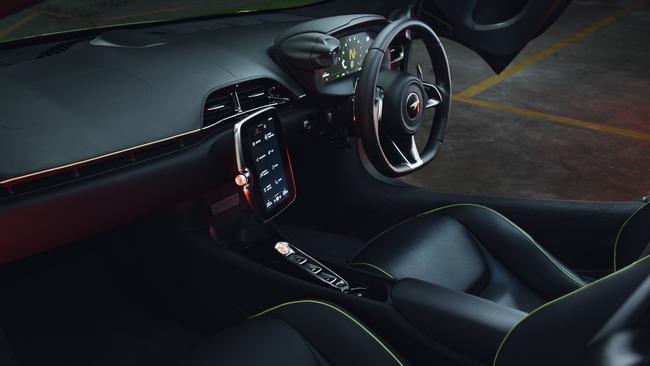
Fortunately, the hyper hybrid Artura, a car that will no doubt go down in history as part of a golden age of motoring – in the window between combustion and the inevitable arrival of fully electric super cars – where vehicles are combining the tech of today and tomorrow into potent packages of violent speed, spends most of its time feeling utterly nailed to the road.
Within seconds I was breathing again, and then chunter-chuckling to myself as I felt the outrageous shove out of corners in second gear that this thing provides, its E-Motor delivering kidney-punching torque low down before the turbos and cylinders join the party to really smack your back. Allegedly, the Artura hits 100km/h in 2.9 seconds, but it feels even faster and I fully believe the claim that it can double that speed in just another 5.5 seconds.
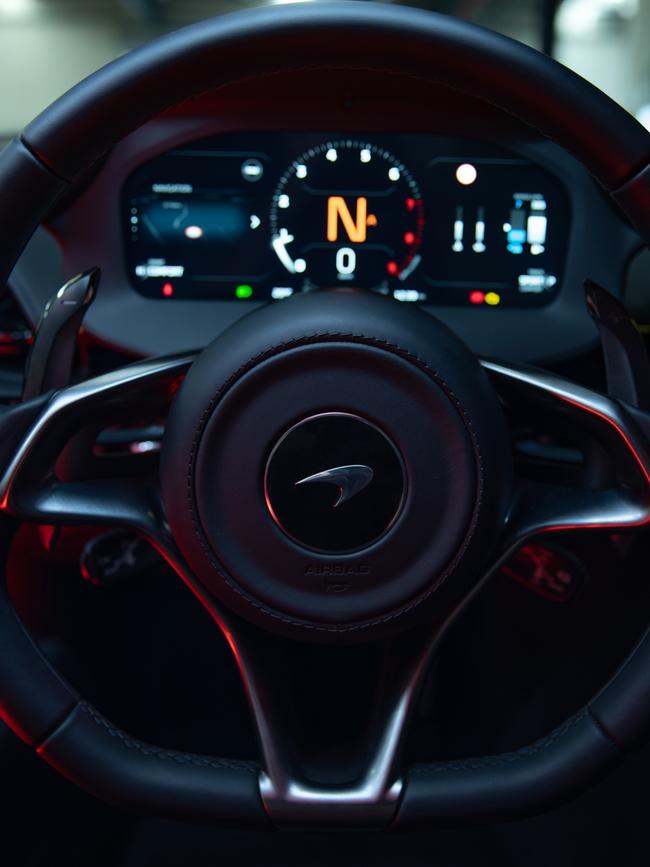
McLaren is particularly proud of the problems it solved with this car. Hybrids, thanks to their batteries, are heavy and usually bulkier, too, but the engineers applied their F1-honed skills to making the Artura as light as possible, achieving a dry weight of just 1395kg, while also keeping the wheelbase short and sharp. In their spare time, they also created a voluble V6 that sounds better than the company’s previous V8 efforts – “tuneful rather than brutal”, as they put it.
The whole car feels like yet another leap ahead for McLaren, with its ability to start up silently without annoying the neighbours and the way the driving position and the steering in particular make you feel like a living, quivering part of the machine.
While it is fast enough to turn your kidneys into beans, the Artura can’t quite match the similarly hybridised Ferrari 296 GTB (with 610kW), but McLaren points out it has a 720S model to do that job. Nor is it able to quite take on any Ferrari in the looks department; the attractive-enough Artura is a Sam Worthington/Cate Blanchett to the Italian company’s simply stunning Chris Hemsworth/Margot Robbie. Like any machine with this much power, of course, the Artura is at home and fantastical on a track, but it is yet another super car that feels like it will be almost too insane to drive on public roads (although I look forward to trying it), particularly if you’ve got another bloke in the passenger seat.
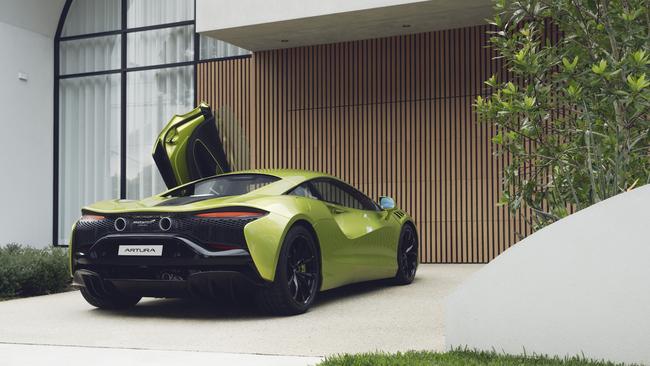
McLaren Artura
Engine: 3.0-litre six cylinder, plus E-Motor (500kW/720Nm)
Fuel economy: 4.6 litres per 100km
Transmission: 8-speed dual-clutch automatic, rear-wheel drive
Price: $449,500
Rating: 4.5 out of 5





To join the conversation, please log in. Don't have an account? Register
Join the conversation, you are commenting as Logout